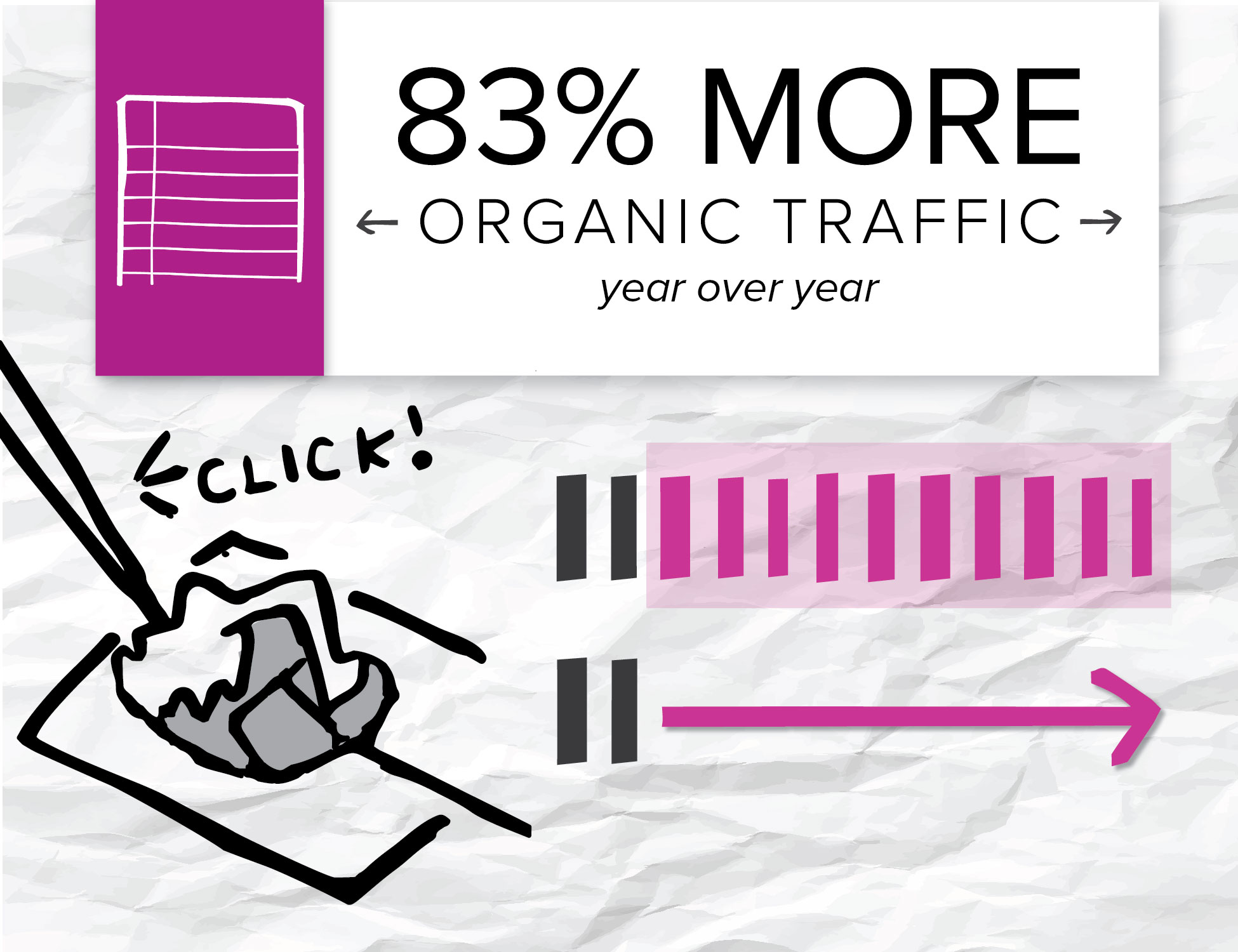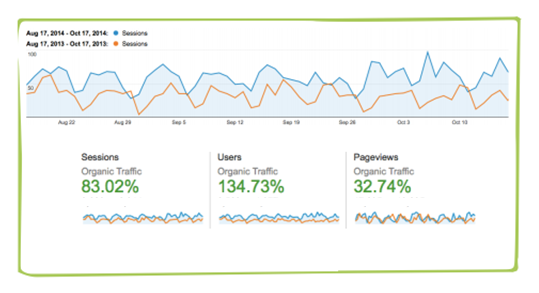Industry: ecommerce
Content: Landing Pages
Highlights: 83 percent more organic traffic YoY & 59 percent more conversions
If you’re like most marketers, you want more traffic flowing to your website.
To get these visits, you invest in both paid and organic SEO campaigns. Smart, but remember that it’s easy to get caught up in the quick wins that come with paid ads, when true ROI depends on your ability to pay attention to which sources of traffic are actually bringing in the money audience.
If you’re torn between the two, here are some reasons why they work well together.
In the case of one of our clients, an ecommerce company with a growing website, organic traffic was easily the winner. Here’s why:
1. A growing audience
At the start of our relationship with this company, paid search was driving the lion’s share of traffic – over 55 percent. As we updated the client’s landing pages with high-quality, search-optimized content that educated prospects about the products, organic traffic started to chip into that lead.
Within two months, organic search’s contribution to overall traffic increased a full percentage point while paid dropped back around 10 percent.
When looking at organic traffic alone, it’s easy to see how the content strategy is impacting visits. Comparing data from the most recent reporting period with results from the year before, organic traffic was up 83 percent, users increased 134 percent and pageviews grew 32 percent.
Check out this other example of when we updated a company’s landing page and it got 135 percent more search traffic.
2. More qualified visitors
More importantly, the visitors coming to the site through organic search were more qualified than traffic from paid ads:
- Organic now has a 15 percent lower bounce rate, meaning people coming to the site from search results are viewing the content on the page and clicking through to other pages.
- How many pages? Between four and five, on average. This is two more than paid visitors (and it suggests there’s a better chance they’re making it to conversion-focused pages like a checkout screen).
- All of those clickthroughs translate to longer time on the site. Organic visitors also stay on the site about FIVE MINUTES LONGER than people coming in from paid channels. More browsing is a signal of greater interest and likelihood that people are going to buy.
Conversions increased 59 percent over a two-month period
3. Highly convertible visitors
At the end of the day, we’re all looking for conversions from our web marketing – and that’s exactly what this organic search strategy was providing. Conversions increased 59 percent over a two-month period, showing the direct payoff of attracting a highly qualified audience – instead of a large audience point blank.
As a marketer, you need more people to find your business online, but that doesn’t mean every click is equivalent. Your success depends on getting the right people to your site who genuinely want to learn about your products and buy from you. If paid search is the solution, great. But if organic traffic is bringing in your highest-value visitors, you need to refocus your efforts to nurture those leads with web content that users can easily find in search.




